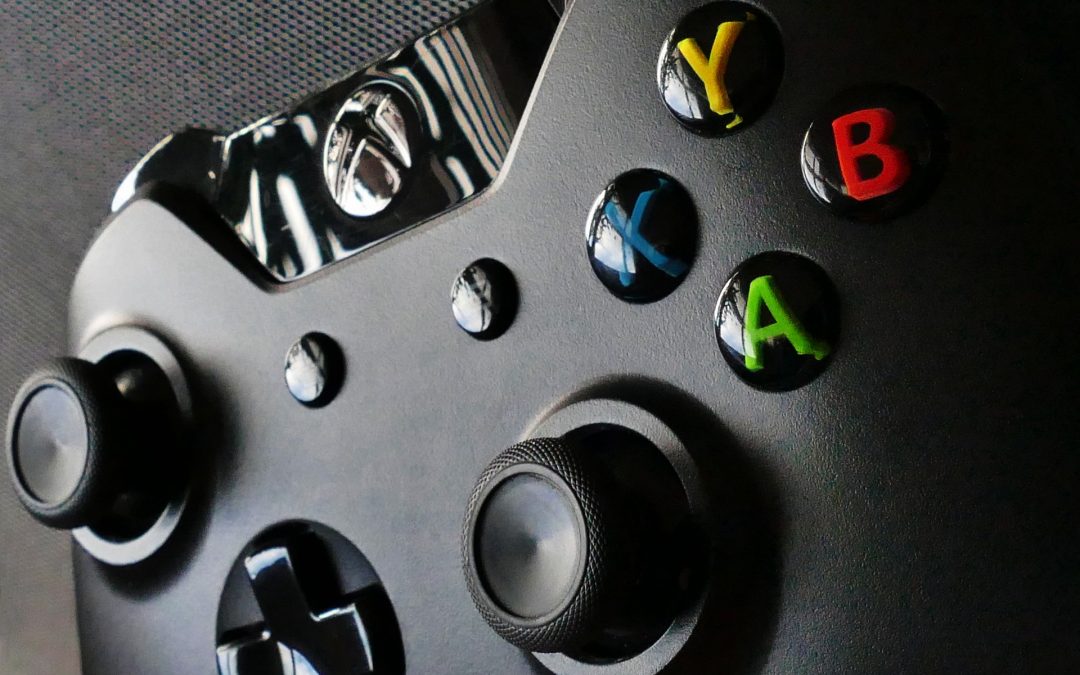
by Don Basile | Dec 9, 2016 | Sports, Tech
Virtual reality technology is slowly seeping into several industries, including marketing and casino gaming and even travel, as companies realize the power of virtual experiences. Now, we’re seeing virtual reality technology making waves in the fitness industry with the introduction of a full-body fitness program that aims to help players improve their fitness level without having to set foot in a gym.
Ryan DeLuca of Boise, Indiana, retired from Bodybuilding.com and then teamed up with tech designer Preston Lewis to launch a new company centered on fitness: Black Box.
Black Box creates a full-body workout program customized for the user and allows players to complete their challenges online with others from their home or office. Workouts are completed entirely in virtual reality so a gym membership becomes obsolete.
The creators of Black Box are currently testing the concept and experience in their office, working through all the drill sequences and developing a scoring system. It’s been coined, ‘the gym of the future’ and could very well lead a new generation of gym experiences that give users a chance to completely immerse themselves in a fitness experience while getting in shape.
The game is designed as an adventure or mission so it doesn’t feel like you are working out. According to Black Box VR, “You aren’t working out. You are saving a city. Or solving a mystery. Or finding the treasure….Functional fitness in a fictional world.”
The company has developed three 40-minute exercise routines with different scenarios and have integrated props, such as electronic cable systems, for resistance training into the game. The app that goes along with the game keeps track of performance and all the details of the workout so the user can make adjustments and set goals.
Black Box is getting ready to revolutionize the fitness industry with a no-gym-required workout program. It could very well be paving the way to the future of fitness where simulating movement in a fictional world is just as effective — and maybe even more so — than lifting a dumbbell or running on a treadmill at the local gym.

by Don Basile | Dec 2, 2016 | Sports, Tech
As the holidays approach, it’s not just mistletoe, snow, and eggnog on people’s mind — it’s the anxiety-inducing prospect of gift-giving. What should you buy? What should you ask for? Socks, again? Or something more exciting? Whether you’re a confident shopper or not, it can be difficult to come up with good ideas year after year.
New technology can make a superb gift both to wrap and unwrap, but it can also be risky. Tech advances fairly rapidly, meaning most products have a shelf life that often ends with the next big upgrade. But if you’re constantly waiting for the “best” tech product, you’ll be waiting forever.
This seems to be the case with wearable technology. People sit around waiting for smartwatches to get smarter and end up missing out on all the great things they have to offer.
Maybe this is the year to embrace wearable technology, or maybe it’s not. Whatever the case, I submit to you several ideas that I think would make great gifts this holiday season.
With the New Year comes new goals, of which fitness is often one. FitBits make great gifts for close family members or loved ones that have expressed an interest. The newest versions are even better than the last: the FitBit Charge 2 now includes cardio monitoring and guided breathing; the Flex 2 is now smaller, more stylish, and water-resistant.
Samsung Gear is less about fitness than it is style and efficiency. The release date and pricing have not been released yet, but it will likely hit the shelves before the holiday. The S3 will be the first device to connect to high-speed LTE networks from its carrier. With the look of a luxury watch and the function of a cellular companion, word has it the watch will have a four-day battery life compared to the Apple Watch 2’s 18 hours.
Transitioning from the wrist to the head, one can’t talk about wearable technology anymore without mention of virtual reality (VR) and augmented reality (AR). Sony’s PlayStation VR, released on October 31, has a 5.7” display and a 100-degree field of vision.
On to AR, the Microsoft Hololens has been the talk of the tech world for some time now, but has yet to become commercially available. That all could change between now and the end of the year. The HoloLens overlays “holograms” onto your field of vision and lets you interact by tracking your head and hand movements.
These are just a few of the up-and-coming wearables in the tech world. In my opinion, a high-tech holiday season is a happy one. And if you can’t have a white Christmas, you might as well have a wearable one.

by Don Basile | Nov 29, 2016 | Tech
Google has been on top of cutting-edge technology since its now-ubiquitous search engine rose to prominence. You may or may not have noticed, but the search engine has gotten smarter: it learns from your behavior and alters your results based on search trends and location.
Essentially, Google is the king of algorithms. And guess what? Its machine learning algorithms can belong to your business, too. Recently, Google opened its Cloud Machine Learning platform to all businesses in public beta. Essentially, it allows businesses to train their own models at a faster rate using Google’s system — just a few hours compared to days or more.
Google, now part of conglomerate umbrella Alphabet, is much more than a search engine now, so this service has little to do with your daily queries. Still, it encompasses what we’ve come to expect from Google: speed, intelligence, and constant improvement. That is machine learning in a nutshell, too.
So, how can businesses utilize Google’s Cloud Machine Learning? We can take one example for starter’s: Airbus Defense and Space. This company used the system to automate the process of detecting and correcting satellite images that contain imperfections, like cloud formations, for example.
According to Mathias Ortner, the company’s Data Analysis and Image Processing Lead, “Google Cloud Machine Learning enabled us to improve the accuracy and speed at which we analyze the images captured from our satellites. It solved a problem that has existed for decades.”
More problems can be solved with machine learning — this only scratches the surface. Google has launched two separate services: their Machine Learning Advanced Solutions Lab, which allows businesses to work with Google engineers to solve complex problems, and the Cloud Start program, which offers educational workshops to teach them the fundamentals.
Considering it was Google’s engineers that worked with Niantic before the launch of Pokemon Go, an opportunity to work with the tech giant could definitely be transformative for many. With more businesses in the machine learning game, more customers across the board will benefit from smarter services geared to get even smarter over time.

by Don Basile | Nov 7, 2016 | Sports, Tech
The rapid growth of the gaming industry in recent years has turned many people into power players. We live in a new era of competition where video games and virtual reality gaming experiences are part of modern day culture, encouraging people to develop certain skills until they achieve a level of mastery.
Now, a company is launching an Olympic Games specifically for the $1 billion e-sports gaming industry, according to CNBC. Competitive gaming tournaments where participants play in teams to win medals may soon become the norm.
According to CNBC, the International eGames Group will be hosting the first ever e-sports Olympics in South Korea for the 2018 Winter Olympics. This will be a competition to earn medals and take home the gold for the participant’s country. National qualifiers for the 2018 Olympics will be held through 2017. Professional gamers from around the globe will be practicing their gaming skills and the event is expected to attract a large crowd.
E-Sports Gaming Culture
The concept of playing video games at a professional level is not something new. Until now, organizations like the International e-Sports Federation (IeSF) have been hosting competitions in different countries to participate in world-renowned tournaments. Gamers play games like Street Fighter, Starcraft II and League of Legends, according to Mashable. The IeSF took the lead on pushing for E-sports to be part of the Olympic Games.
Multiplayer gaming competitions and tournaments have a history that can be traced back to the 1980s. Atari’s Space Invaders Tournament is one example of a highly publicized event that encouraged gamers to get out and compete at a professional level. Several other tournaments fueled by the rapid growth of PC games in the 1990s spurred the trend, according to The Market for Computer & Video Games.
Major League Gaming (MLG) was established in 2002 and since then, we’ve been seeings several competitive gaming tournaments and virtual arenas making their way into mainstream culture. In 2014, more than 11 million people simultaneously watched the 2014 League of Legends World Championship event; 71.5 million people watched pro-gaming in 2014, according to Red Bull, reports MCV.
While gamers around the globe are in full favor of making their mark on the world at the Olympic level, there is still ongoing debate as to whether playing a video game — and even the skillet to win a game — qualifies as a real sport. Many people are questioning whether the whole tournament is more like a competition rather than a sport someone would train for since there is no real physical component or rigorous training program involved. Others argue that chess was once considered to be a sport, and so gaming may fall under the same category.
Professional Gamers On the Rise
While some may not take professional gaming seriously, the process of becoming a pro does require many hours of practice and skills development. Many professional gamers join online forums to learn tips and strategies for playing different games. There are dozens of online tournaments for those who want to brush up on their skills or continue developing their skills without the pressure of having to win a medal. Major League Gaming, for example, hosts online GameBattles where players can participate for free and win cash.
Online tournament enrollment requirements vary by team and most are designed for team players which means gamers need to seek out people they want to play with and not just compete with. Some companies that host tournaments charge a fee for entry or participation. And, there is a wealth of information online for studying the techniques and play styles of successful gamers. Pros-in-training need to know how to maneuver their joysticks or touch pads, use different types of virtual reality gear, and troubleshoot different gaming tools.
An Olympic Games for E-sports is on the horizon and many professional gamers are busy training like athletes for these highly-competitive events. Video games as a sport is now being taken seriously but is not without its critics. As the gaming industry continues to innovate and grow with virtual reality technologies and advanced gaming systems, we may see players developing even more advanced skills and techniques that put them in a completely new category of competitive athletes of the future.

by Don Basile | Nov 2, 2016 | Tech
This post was originally featured on TechCrunch.com
Marijuana is an ancient plant with borderline mystical properties — just ask the 266 million people who smoke it every year. Hemp, the industrial strain of Cannabis sativa, has been used for many purposes — food, fuel and textiles among them — for tens of thousands of years. Unlike its sister strain, hemp can’t get you high. But much like the drug, it has extraordinary qualities.
America is no stranger to hemp. In fact, Betsy Ross sewed the first American flag with hemp and George Washington farmed it at Mt. Vernon. Unfortunately, its full potential was never realized; drug restrictions that banned marijuana suppressed hemp, too. This spurious conflation quashed the industry for about 60 years, until a 2014 farm bill defined it as an agricultural crop, leaving the door ajar to American farmers.
As marijuana laws continue to loosen across the country — and the world — it looks like hemp could be brought back in a big way. With China leading in worldwide hemp production and Canadahaving capitalized on it during America’s drug war, now is the time to get in the game. In today’s fast-paced and tech-driven world, this means re-adopting the plant for today’s innovation economy.
Hemp could make a huge difference in everyday products, certainly. But even more exciting are the groundbreaking research and high-tech products it’s already spearheading.
Amazing properties
Before we launch into some of hemp’s cooler applications, it’s important to understand just what makes hemp so unique.
First and foremost, hemp is incredibly environmentally friendly. Instead of depleting the land’s nutrients, like cotton does, hemp actually puts nitrogen back into the soil. It takes less water, but produces more plants per acre (for reference, one acre of hemp produces four times the paper an acre of trees does.) Its low lignin content and natural brightness reduces the need for pulping and bleaching, meaning fewer chemicals are needed all around.
Hemp grows in a wide variety of soils and climates, so it can be harvested in all 50 states (though only about half legally). It’s one of the strongest plant fibers and is naturally resistant to weeds and pests. It harvests quickly, growing 10 to 20 feet in just four months.
Then you have hemp seeds, an incredible source of protein. More than 25 percent of their calories come from high-quality protein, considerably more than similar foods like chia seeds and flax seeds. Various studies have linked them to a reduction in risk of heart disease and easing of PMS and digestion.
Hemp is also ideal for the production of ethanol, the cleanest-burning liquid bio-alternative to gasoline. Combustion releases water vapor and CO2, which plants absorb.
It’s no wonder hemp is called a smart plant, as it seems almost too good to be true, especially in a world rife with environmental and climate concerns. Considering farmers need the DEA’s approval before sowing seeds, there is still a barrier to entry — for now, anyway.
Future-forward applications
Restrictions aside, preliminary research has yielded results that only confirm hemp’s potential, and not just as an everyday alternative to cotton and wood, but for high-tech innovations.
Ever heard of graphene? Hemp fiber is also incredibly strong and light, and Dr. David Mitlin, a scientist from Clarkson University in New York, says his team has mimicked the nanomaterial’s amazing qualities using hemp waste. According to Dope Magazine:
Dr. Mitlin and his team were able to recycle leftover hemp-based fiber, cook it down and then dissolve it until carbon nanosheets that resembled the structure of graphene were left behind. They proceeded to build these nanosheets into powerful energy-storing supercapacitors with high energy density, thus creating a hemp based “graphene.”
The best part? This graphene-like hemp costs only a fraction of the price of traditional graphene: $500 a ton compared to $2,000 per gram. Dr. Mitlin also suspects the hemp-based product could outperform graphene.
Another amazing product is hempcrete, a concrete made with hemp and lime. For construction, hempcrete is essentially a super-concrete: Its negative CO2 footprint alleviates the greenhouse effect and improves air quality. Its natural insulation keeps homes warm or cool, reducing need for energy. Its resistance to cracks under high pressure makes it well-suited for earthquake-prone areas. It’s even mold, fire and termite proof.
Hemp also can be used to create bacteria-fighting fabrics. As early as the 1990s, scientists in China were developing blended hemp fabrics with superior resistance to staph in order to prevent sometimes fatal infections in hospitals. Considering at least two million Americans get staph infections when hospitalized, and 90,000 die, this could be a life-saving innovation here in the U.S.
Luckily, Colorado company EnviroTextiles is on it. The company’s hemp-rayon fabric blend has shown in preliminary studies to be 98.5 percent staph resistant and 65.1 percent pneumonia-free. In addition, EnviroTextiles offers hemp fabric resistant to UV and infrared wavelengths, ideal for military purposes.
What’s next?
These are just a few of the many high-tech and future-forward applications hemp has. As a form of sustainable agriculture, hemp farming holds enormous potential — for the planet, the economy, and even veterans seeking employment. Once the hemp is produced, it may not get you high, but figuratively, the sky’s the limit.
After all, how fitting is it for an ancient plant, used both 10,000 years ago and in early America, to continue its legacy in our modern world? Betsy’s hemp-based flag became a symbol for the country, which is now a leader in technological innovation. It would be foolish not to take the bull by the horns and ride it.




